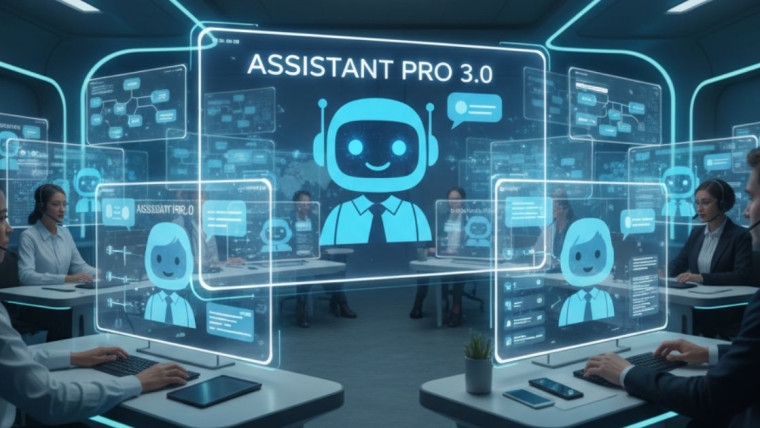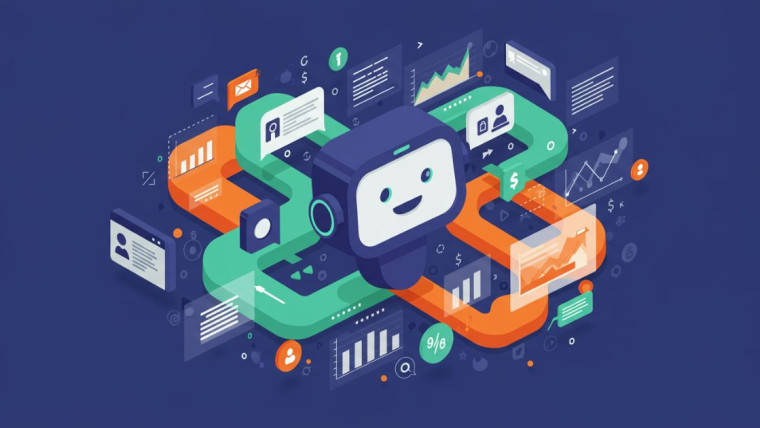Technology continues to reshape our world, and one of the most captivating tendencies in recent years is the rise of bots, especially chatbots. These digital helpers have grown to be a crucial part of how we talk, get hold of records, or even conduct business. But what exactly are bots and chatbots, and why are they so critical?
This blog will explore the entirety you need to know about bots, from their history and types to their benefits, challenges, and what the future holds. Whether you’re a tech enthusiast, a business chief, or just someone curious approximately how bots have an effect on your everyday life, this guide will provide valuable insights.
How Bots Came to Be
Bots, short for “robots,” are automated applications designed to perform specific tasks. They’re particularly true at handling repetitive jobs, frequently running quicker and more accurately than any human may want to. Chatbots, a subset of bots, are conversational software packages that engage with users via textual content or voice, simulating human-like interplay.
The origins of bots trace back to the early days of the Internet. Early bots had been, in large part, simple scripts designed for automation, inclusive of IRC bots (for handling chatroom functions) and early web crawlers (designed to index online content). Over the years, bots have grown exponentially in complexity, thanks to improvements in artificial intelligence (AI) and gadgets getting to know. What began as rudimentary packages now strength surprisingly sophisticated systems capable of performing complex tasks.
A Brief History of Bots
The evolution of bots spans decades:
- 1966 – The first chatbot, ELIZA, was developed as a program simulating a psychotherapist. It was groundbreaking for its time, but relied on simple, pattern-matching techniques.
- 1997 – ALICE (Artificial Linguistic Internet Computer Entity) improved on ELIZA’s groundwork by using natural language processing (NLP).
- 2011 – Apple launched Siri, marking the transition of chatbots from simple text-based programs to voice-enabled assistants.
- 2014 – Facebook introduced bots into its Messenger platform, allowing businesses to automate customer interactions.
- 2023 and Beyond – Bots are now deeply entrenched in areas like healthcare, e-commerce, and home automation, with platforms like OpenAI’s ChatGPT and generative AI leading the charge for innovation.
With every passing year, bots become smarter, more reliable, and more integrated into our daily lives.
Types of Bots You Should Know About
Bots are highly versatile, coming in many forms depending on their function. Here are some of the most common types:
1. Chatbots
Chatbots are widely used to imitate human conversation. These bots are employed in customer service support systems (e.g., answering FAQs) or personal assistants like Alexa and Google Assistant.
2. Web Crawlers
Search engines, like Google, rely on web crawlers (or spiders) to index websites. These bots systematically browse the internet, cataloging information for search engine databases.
3. Social Media Bots
These bots interact on platforms like Instagram and Twitter by leaving comments, following accounts, or even managing engagement for businesses. However, not all social media bots are beneficial, as some have been used for spreading misinformation.
4. E-commerce Bots
Online retail platforms use bots to offer personalized shopping recommendations, price tracking, and inventory updates.
5. Gaming Bots
Within gaming environments, bots enhance user experiences. Multiplayer bot opponents, for example, make games engaging even without human players.
6. Health Bots
Healthcare providers now leverage bots for virtual consultations, appointment scheduling, and even symptom analysis. These bots are transforming patient interactions.
Each type of bot serves a unique purpose, showcasing the flexibility and utility of bot technology across domains.
How Bots are Being Used Across Industries
Bots aren’t just tools for tech enthusiasts; they’re transforming key industries and elevating how businesses function.
1. Customer Service
Bots like Zendesk or Intercom allow companies to respond to inquiries faster with 24/7 availability. Chatbots can handle everything from resolving simple queries to escalating complex issues to human representatives, ensuring seamless service.
2. E-Commerce
E-commerce companies use bots to enrich customer experiences. Tools like Shopify’s Kit can curate product recommendations, while chatbots assist in tracking orders, answering product questions, and even completing purchases.
3. Healthcare
Bots have become pivotal in healthcare. For instance, Babylon Health uses AI-driven bots for virtual symptom checks, while therapy bots like Woebot provide mental health support to users.
4. Education
Educational institutions utilize bots for personalized learning experiences. AI platforms offer interactive lessons, grade assignments, and track students’ progress.
5. Social Media Engagement
Automated bots manage social media accounts, reply to comments, monitor brand sentiment, and even analyze engagement metrics in real time.
From making businesses more competitive to simplifying daily processes, the use cases for bots continue to expand.
The Benefits of Using Bots
The growing presence of bots is far from coincidental. Their benefits are undeniable:
- Cost Savings – Automating repetitive tasks allows companies to reduce operational costs while improving efficiency.
- Scalability – Bots can handle hundreds of interactions simultaneously, something no human team could achieve efficiently.
- Speed and Accuracy – Whether processing customer requests or analyzing massive datasets, bots complete tasks quickly and without error.
- Enhanced User Experiences – Bots personalize user interactions, offering instant answers and tailored recommendations.
- Round-the-Clock Availability – Bots don’t need sleep. They’re ready to assist 24/7, ensuring businesses are always accessible.
The Challenges of Bot Adoption
While bots bring numerous advantages, there are challenges to consider:
- Security Concerns – Bots can be vulnerable to hacking and malicious use. Ensuring rigorous security measures is crucial to prevent data breaches.
- Ethical Issues – When bots interact on platforms like social media, transparency is essential. Users have the right to know when conversing with a bot versus a human.
- Complex Deployment – Setting up advanced bots involves integrating them with existing systems, which isn’t always straightforward.
- Quality of Interaction – Poorly designed bots can harm customer experience rather than improve it. Adding a human touch to conversations is still crucial.
Navigating these challenges requires ethical and technological accountability in how bots are designed, deployed, and used.
What Does the Future Hold for Bots?
The future of bots is brimming with potential. Emerging trends indicate several exciting developments:
- Smarter AI Integration – Advanced AI technologies like GPT models will only enhance bots’ conversational abilities and data analysis.
- Voice-Powered Bots – Voice interactions are likely to become dominant, shifting the focus away from text-based chatbots.
- Hyper-Personalization – Bots will leverage real-time data to deliver even more personalized and contextually relevant recommendations.
- Cross-Domain Functionality – Bots that seamlessly switch between tasks or industries will blur the lines of their applications.
- Collaboration with Humans – Hybrid systems combining human expertise with bots’ efficiency are expected to increase.
These trends underscore the importance of staying adaptable as bots continue shaping our digital future.
The Transformative Potential of Bots in Our Lives
The rise of bots and chatbots indicates one of the maximum significant technological advancements in present-day times. These clever digital assistants have the energy to make corporations more green, customer-centric, and aggressive.
Want to see the power of bots in action? Whether you’re thinking about adopting automatic tools for business operations or are definitely interested in gaining knowledge of more knowledge, there is no better time to explore the potential of bot generation. Start your discovery with a hands-on revel in, and you’ll see firsthand how bots can revolutionize your international.








The Future of AI Chatbots in Customer Experience: What’s Next?
How Chatbot Analytics Evolved from Basic Metrics to AI-Powered Insights
How Chatbots Are Reshaping the Future of Online Education
AI Chatbots in Healthcare: Transforming Patient Support and Engagement